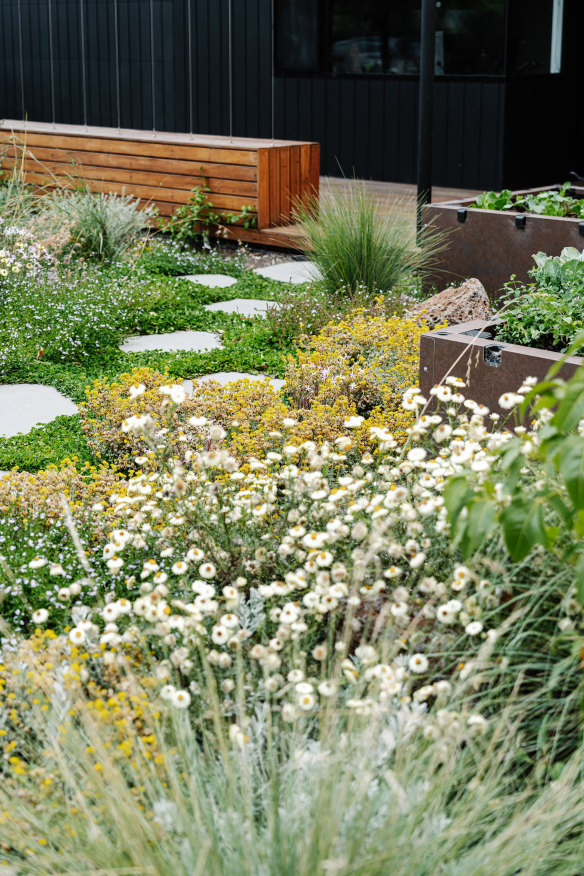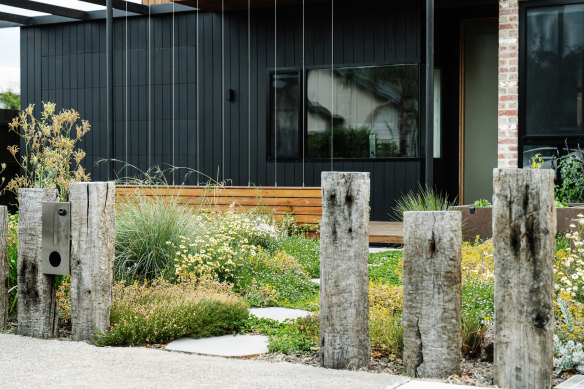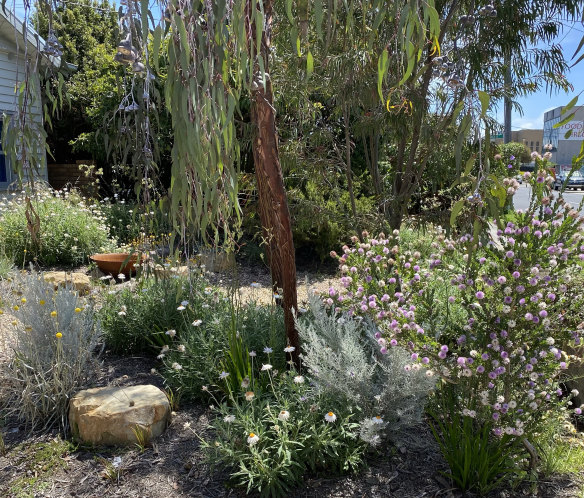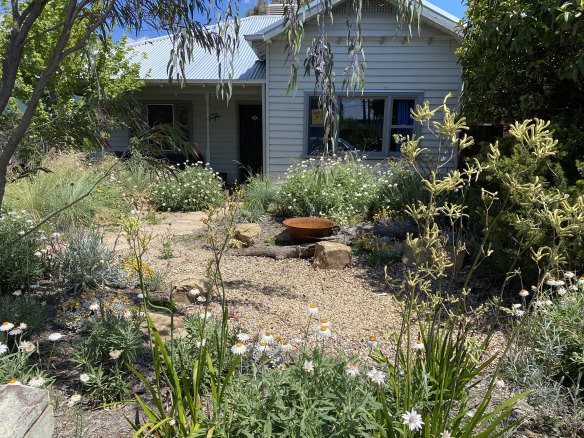This was published 9 months ago
How to create a native garden that birds and people will love
Sixty-seven years after the Australian Native Plants Society began championing the beauty and brilliance of local flora, the association is still working to spread the word. When the society’s sold-out biennial conference starts in Melbourne later this month, speakers will discuss everything from the diversity of pea flowers to the appeal of periodically coppiced mixed shrubs.
Forests in cities, wetlands in the country, and saving rare plants will all get a look in. Speakers will highlight plantings that appeal to both birds and people, and that provide sustenance for insects, shade for pedestrians and alternatives for diversity-lacking mulch.

There are no areas of bare soil in this Melbourne front garden designed by Emmaline Bowman.Credit: Marnie Hawson
But how to translate some of these themes into your own garden, particularly if it’s small?
Miriam Ford, the society’s Victorian state president and the convener of the conference, says there’s no one-size-fits-all approach. The trick is to find whatever hook inspires you to get started and to take it from there.
“There is an important role for beauty and for native gardens that pop. But there is also the value of native plants as sources of food or of materials for fabrics or medicine,” Ford says. “Minimalist, carefully crafted gardens can work, but there is also room for things that are more haphazard and spontaneous.”
Landscape architect Emmaline Bowman, who will speak about wetlands at the conference, encourages people to take a holistic approach to their gardens, considering everything from the soil to the plants and wildlife. But she says new gardeners should also reflect on what they most want to achieve, whether it’s attracting a particular butterfly or a certain type of bird. Then “it’s like making a cake, you need to find the ingredients that do that”.
As for choosing those ingredients, selecting the right plants for your location and goals will involve more than impulse buying.
Bowman, who won best in show for a spectacularly abundant native garden at this year’s Melbourne International Flower and Garden Show, suggests that a first step for new gardeners is to observe what is growing well nearby. She says looking at other gardens, consulting your council website for information about the indigenous plants and wildlife in your area, and visiting local nurseries with good stocks of native plants are all useful places to glean information about what might work for you.
She also advises looking further afield – including at botanic gardens and specialist nurseries – for ideas about how a wider variety of plants might be used in a range of situations. She recommends choosing plants of all heights so there are a multitude of layers to support a diverse range of wildlife.

An open front fence made of recycled sleepers can allow passersby to engage.Credit: Marnie Hawson
While people often concentrate on planting up their back gardens, Bowman encourages paying attention to as many other niches as possible, including front gardens, especially if that is the area that gets the most sun.
“Front gardens can also be a gateway to the community,” she says. “They spark up conversations, bring people together and become a hub. Gardens that connect people with critters and flowers are such complex systems, but they are also so simple. That is what’s intoxicating.”

Layering within gardens is a great way to support different kinds of wildlife.Credit: Emmaline Bowman
To maximise the impact of front gardens, she has a preference for unobtrusive fences that invite people to look in. Bowman says she has even been asked to create a front garden with areas in which passersby might take a seat.
Bowman hopes that by opening gardens up to the street, “people will stop and think about how beautiful and diverse these plants are”, and feel inspired to try similar things themselves. She sees it as a way of encouraging people to create more native environments “on our doorsteps” at a time when cities are becoming increasingly built-up and areas of native habitat are getting more fragmented.

A shallow depression in a garden can be a thoughtful way to capture rainwater.Credit: Emmaline Bowman
For those with only balconies or small courtyards, Bowman says many Australian plants can thrive in pots. While water bowls can also help attract birds, she says people should be wary of introducing these if they have pets that might prey upon visiting wildlife.
Ford, who has long grown Australian plants in containers– including paper daisies, native mints, correas and Geraldton waxes – says it’s becoming increasingly clear that “what we do locally matters”.
The Australian Native Plant Society, established in 1957, is continuing to drive that point home.
Go to anpsa2024conference.com for more information about the society’s Gardens For Life conference, which runs from September 30 to October 4 in Melbourne.
Make the most of your health, relationships, fitness and nutrition with our Live Well newsletter. Get it in your inbox every Monday.